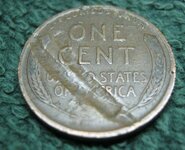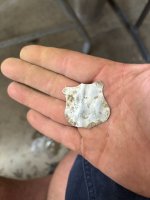
1919 Wheat cent with these strange grooves on the reverse. Hard to see their depth with a straight on pic, and angled like this caused some slight blurriness but it's still the best view.
Obverse shows no corresponding distortion at all which makes me question the post-mint damage theory, so a strike-through is another possibility. Opinions?




